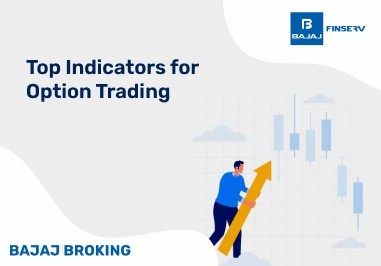BAJAJ BROKING
PDP Shipping & Projects IPO is Open!
Open a Free Demat Account
Trade Now, Pay Later with up to 4x
Track Market Movers Instantly
Peak Margin Norms: Effectiveness in Intraday Trading
Peak margin norms are a set of rules introduced by the Securities and Exchange Board of India (SEBI) to regulate the margin requirements for intraday and derivative traders. The main objective of these rules is to reduce the risks associated with high-leverage trading and to ensure that traders have enough margin to cover their positions. But are these rules really serving their purpose? Let us find out.
What Are Peak Margin Norms?
Peak margin norms were implemented in four phases, starting from December 2020 and ending in September 2021. According to these norms, traders need to pay 100% of the margin upfront for their intraday trades, based on the highest margin utilised by them during the day. The exchanges and clearing corporations take four random snapshots of the margin utilisation of each client during the day, and the highest of these is considered as the peak margin. If the margin collected from the client is less than the peak margin, the broker has to pay a penalty ranging from 0.5% to 5% of the shortfall amount.
The peak margin norms apply to both cash and derivatives segments, and cover all types of intraday trades, such as margin trading, futures and options, and commodity trading. The peak margin norms also restrict the leverage offered by brokers to their clients, as they cannot lend more than the available margin in the client's account.
Why Were Peak Margin Norms Introduced?
The peak margin norms were introduced to curb excessive speculation and leverage in the intraday trading market, which can pose systemic risks to the financial system and potentially result in significant losses for investors. Prior to the peak margin norms, brokers could offer up to 30-40 times leverage to their clients, which means that a client with Rs 10,000 as margin could place a trade worth Rs 4 lakh. This could expose the client to huge losses in case of adverse price movements and increase the default risk for the broker.
The peak margin norms aim to limit the leverage and ensure that the clients have sufficient funds to cover their positions at any point of time during the day. This can reduce the volatility and speculation in the market and protect the investors from losing more than their capital.
What Has Been the Impact of Peak Margin Norms?
The peak margin norms have had a mixed impact on the intraday trading market and the investors. On one hand, the peak margin norms have reduced speculative trading and leverage in the the market and have improved risk management and transparency in the margin system. There's evidence to suggest that the peak margin norms may have encouraged some investors to shift from intraday trading to delivery-based trading, potentially leading to better price discovery and long-term wealth creation.
On the other hand, the peak margin norms have also reduced the liquidity and turnover in the intraday trading market and have affected the profitability and competitiveness of the brokers and the traders. The peak margin norms have also increased the cost of trading for the investors, as they must pay higher interest and brokerage charges for availing margin facilities. The peak margin norms have also limited the trading opportunities and strategies for the investors, as they cannot take advantage of the intraday price movements and arbitrage opportunities.
Are Peak Margin Norms Serving Their Purpose?
The peak margin norms are serving their purpose to some extent, as they have reduced the risks and speculation in the intraday trading market and have enhanced the margin system and investor protection. However, there are challenges and criticisms to be considered, such as the potential adverse effect on market liquidity and turnover, and the increased cost and complexity of trading for investors. Therefore, the peak margin norms need to be reviewed and revised periodically, to strike a balance between the risk and reward of intraday trading, and to cater to the needs and preferences of the different stakeholders in the market.
Conclusion
Peak margin norms are a regulatory measure introduced by SEBI to regulate the margin requirements for intraday traders. The peak margin norms aim to reduce the risks and speculation in the intraday trading market, and to ensure that the traders have enough margin to cover their positions. The peak margin norms have had a mixed impact on the market and investors, presenting both positive and negative aspects. The peak margin norms need to be evaluated and updated regularly, to ensure that they serve their purpose effectively and efficiently.
Disclaimer: Investments in the securities market are subject to market risk, read all related documents carefully before investing.
This content is for educational purposes only. Securities quoted are exemplary and not recommendatory.
For All Disclaimers Click Here:https://bit.ly/3Tcsfuc
Share this article:
Read More Blogs
Our Secure Trading Platforms
Level up your stock market experience: Download the Bajaj Broking App for effortless investing and trading













